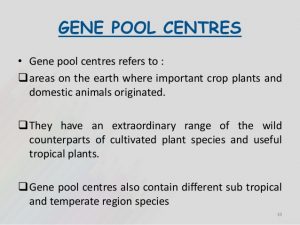Geography Notes On – Major Gene Pool Centres – For W.B.C.S. Examination.
There are then many still unanswered questions pertaining to how our subcontinent was peopled. But the most plausible scenario is the one depicted in the following fashion. The earliest migrants into India, perhaps 50 kybp (kybp – thousand years before present) may have been the Austric speaking Homo sapiens, with the advantage conferred by the mastery over a symbolic language.Continue Reading Geography Notes On – Major Gene Pool Centres – For W.B.C.S. Examination.
The next major waves of migrations around 6 kybp may have been those of wheat cultivators from the Middle East and the rice cultivators from China and South East Asia. The latest major migration around 4 kybp may have included several waves of Indo-European speakers equipped with horses and iron technology. These might have been the most massive migrations peopling India.
The origins and affinities of the 1 billion people living on the subcontinent of India have long been contested. This owes, in part, to the many different waves of immigrants that have influenced the genetic structure of India. In the most recent of these waves, Indo-European speaking people from West Eurasia entered India from the Northwest and diffused throughout the subcontinent. They purportedly admixed with or displaced indigenous Dravidic-speaking populations. Subsequently they may have established the Hindu caste system and placed themselves primarily in castes of higher rank.
What the Indian population is remarkable for is the segmentation of this large population into thousands of endogamous groups and 4635 such ethnic communities can be traced in India. Many of these are however clusters of endogamous groups with similar traditional occupations and social status. Some have subjugated other groups, restricted their resource access and permitted their continued existence, while the dominant groups have themselves grown in numbers and expanded in geographical range, perhaps dividing further into more endogamous groups. This process of maintenance of large number of communities in isolation from each other has been accompanied by extreme specialisation of occupation.
In a world where nations are breaking into micro entities, India has demonstrated its inherent strength. This strength comes from its composite traits that has made India a truly vibrant democracy, the largest in the world – a country where unity thrives on diversity. The nation of more than one billion people – one sixth of humanity, continues to live with traditional values 4,000 years old.
India has more than two thousand ethnic groups, and four major families of languages (Indo-European, Dravidian, Austro-Asiatic and Tibeto-Burman languages). Only the continent of Africa exceeds the linguistic, cultural and genetic diversity of India. The biological diversity owes itself to the country’s position at the tri-junction of African, northern Eurasian and Oriental realm.
Indians, comprising about one-sixth of the world population, with large family sizes and high levels of endogamy, provide a unique resource for dissecting complex disease etiology and pathogenesis. Indian scientists as well as biotech firms have awakened to the fact that there is a genetic jackpot in the country’s endogamous gene pool.
If the genetic study of 275,000 pure bred residents of Iceland could lead to the discovery of disease patterns and new drugs, India can offer a better opportunity, argues the Director of the Centre for Cellular and Molecular Biology (CCMB) in Hyderabad. The CCMB, in collaboration with the Anthropological Survey of India and various universities has already created a large repository of over 9,000 DNA samples from 130 endogamous populations covering the whole of India. In the race to attract global drug companies seeking a suitable destination to do clinical research, India-advantage literally lies in its genes as the country has a heterogeneous mix of people, unlike China’s homogenous population.
Please subscribe here to get all future updates on this post/page/category/website


 +919674493673
+919674493673  mailus@wbcsmadeeasy.in
mailus@wbcsmadeeasy.in







































































































